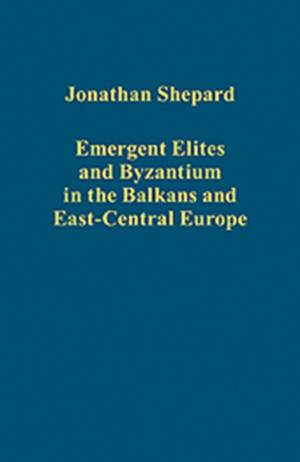
- Afhalen na 1 uur in een winkel met voorraad
- Gratis thuislevering in België vanaf € 30
- Ruim aanbod met 7 miljoen producten
- Afhalen na 1 uur in een winkel met voorraad
- Gratis thuislevering in België vanaf € 30
- Ruim aanbod met 7 miljoen producten
Zoeken
Emergent Elites and Byzantium in the Balkans and East-Central Europe
Jonathan Shepard
€ 183,45
+ 366 punten
Omschrijving
According to Byzantium's leaders, their imperial order anchored in Constantinople was the centre of excellence - spiritual, moral, material and aesthetic. They rewarded individuals willing to join, and favoured outside groupings prepared to cooperate militarily or politically. Interactions with outsiders varied over place and time, complicated by the sometimes differing priorities of Byzantine churchmen and monks on or beyond Byzantium's borders. These studies consider the dynamics of such interactions, notably the interrelationship between the Bulgarians and their Byzantine neighbour. The Bulgarians' reaction to Byzantium ranged from 'contrarianism' to the systematic adaptation of Byzantine religious orthodoxy, ideals of rulership and normative values after Khan Boris' acceptance of eastern Christianity. For their part, Byzantine rulers were readier to do business with their Bulgarian counterparts than official pronouncements let on, occasionally even adopting aspects of Bulgarian political culture. Byzantium's interrelationship with other ruling elites was less intensive, but the process of Christianisation and the need to format this in readily comprehensible terms could make even distant potentates look to the template of effective Christian sole rulership which Byzantium's rulers embodied. Hungarian and Rus leaders were of abiding geopolitical interest to imperial statecraft, and the studies here show how during the generations around 1000 Byzantine political imagery resonated throughout the region.
Specificaties
Betrokkenen
- Auteur(s):
- Uitgeverij:
Inhoud
- Aantal bladzijden:
- 434
- Taal:
- Engels
- Reeks:
Eigenschappen
- Productcode (EAN):
- 9781409403647
- Verschijningsdatum:
- 28/02/2011
- Uitvoering:
- Hardcover
- Formaat:
- Genaaid
- Afmetingen:
- 149 mm x 224 mm
- Gewicht:
- 920 g

Alleen bij Standaard Boekhandel
+ 366 punten op je klantenkaart van Standaard Boekhandel
Beoordelingen
We publiceren alleen reviews die voldoen aan de voorwaarden voor reviews. Bekijk onze voorwaarden voor reviews.








